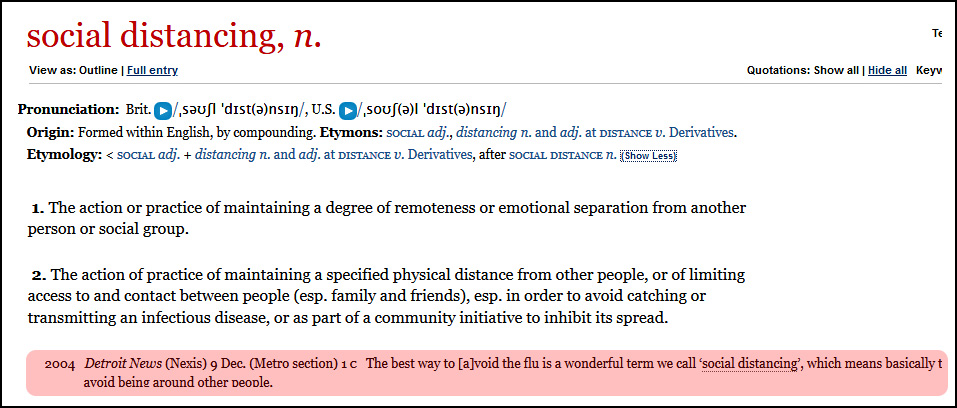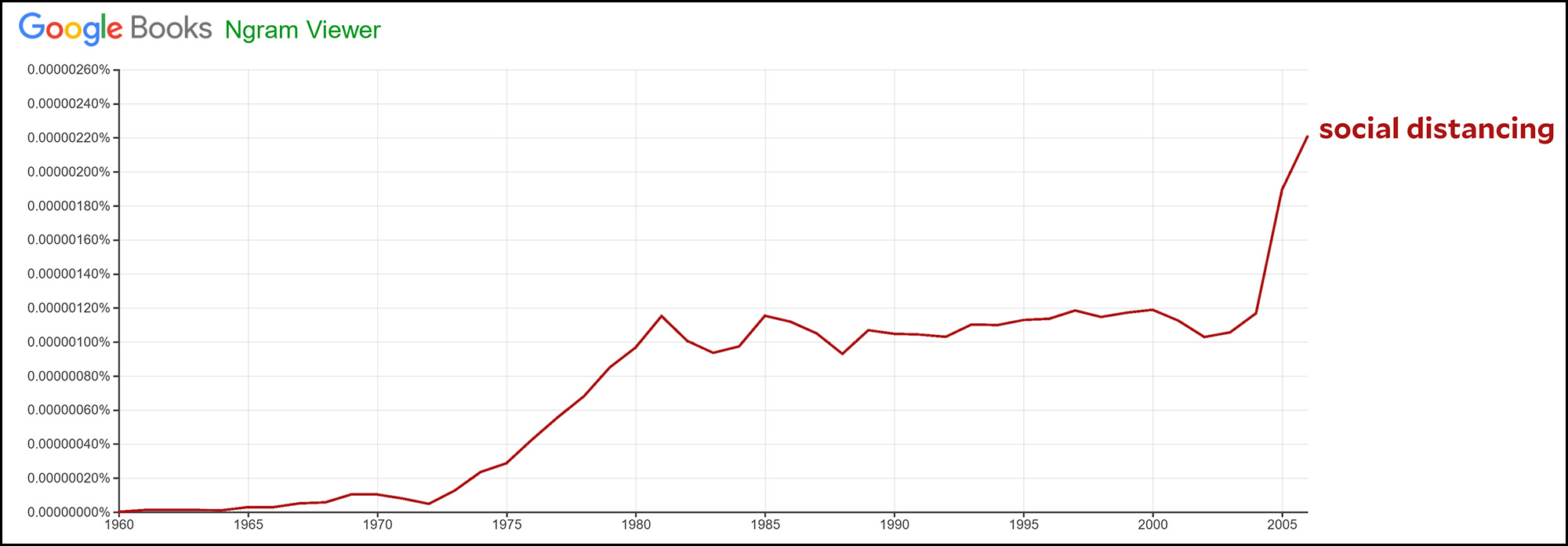The World Health Organization would like to retire the phrase “social distancing” in favor of “physical distancing.” Their logic is impeccable: viruses are transmitted when you get physically close to another person, not when you’re chatting on FaceTime or holding a virtual meeting on Zoom. As long as you’re physically separate, you should feel free to be as social as you want.
Fine. But that got me curious: who came up with phrase social distancing in the first place? Does it go back to the 1918 flu pandemic, when physical distancing and social distancing were more or less the same thing, so no one cared about the distinction? Or what?
This turns out to be surprisingly hard to get a handle on. I am, obviously, talking about social distancing as a phrase that refers to a way of fighting epidemics. I don’t care about crinoline skirts or the social habits of the 16th century Spanish court. The concept of social distancing as a way of keeping your inferiors in their place goes back quite a ways.
But in the current epidemiological sense, it doesn’t seem to go back even to the start of the century:
- The first use in the New York Times comes in 2006: “If the avian flu goes pandemic while Tamiflu and vaccines are still in short supply, experts say, the only protection most Americans will have is ‘social distancing,’ which is the new politically correct way of saying ‘quarantine.’ ”
- The OED has a reference from the Detroit News from 2004:

- I’ve found a few other brief references going back to the SARS epidemic in 2003, though none give any hint to the origin of the phrase.
- And the Google Ngram Viewer, fascinatingly, shows two jumps in the use of the phrase. The first obviously refers to some kind of sociological phenomenon and started gaining popularity in the early 70s. The second, which is almost certainly SARS-related, began in 2004 and then took off in 2005.

So circa 2003 it is, unless someone comes up with something better. But who coined the phrase? And why did they choose to call it social distancing? In 2003 there was obviously a world of difference between social and physical distancing. Is there anyone out there who wants to take the blame for this?














